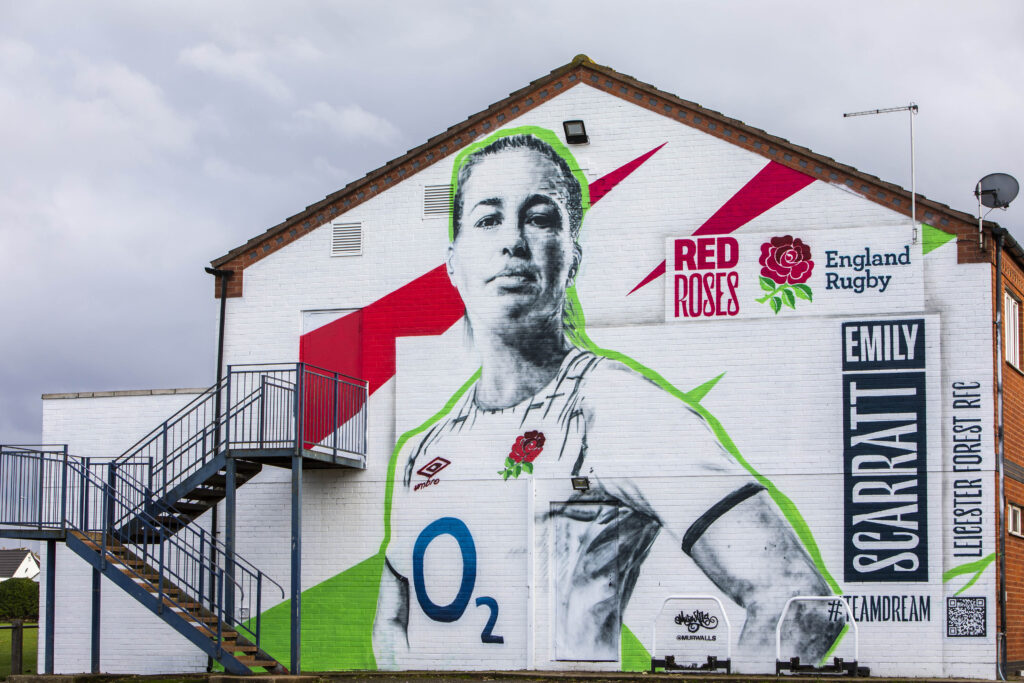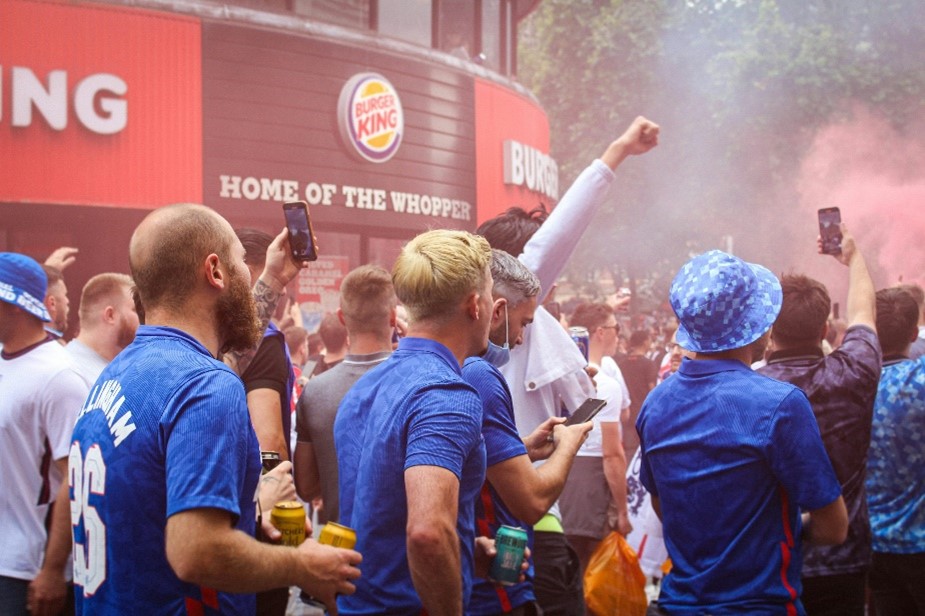Women’s sport sponsorship is (finally) on everyone’s minds. But whether you’re a club looking for a partner, or a brand looking for a sport, knowing how to find a partnership that’s a good fit for you while delivering a solid ROI is crucial.
2022 saw investment in women’s sport increase 20% YoY, which was encouraged further in the UK by the success of the England women’s football team at EURO 2022, and their continued growth into the FIFA Women’s World Cup 2023.
But it’s not just football that’s seeing brands recognise the opportunity; The LPGA leads the way with sponsors from Coca-Cola, Rolex and Epson, The Hundred’s double-header approach has led to brands like KP, Cazoo and Money Supermarket associating their brands, while O2’s sponsorship of England women’s rugby team is one of the strongest out there, recognised by 14 million people.
So, what’s it going to take to make this golden opportunity work for you? First things first, you need to understand the perfect storm of circumstance that’s right in front of you.

Photo credit should read: Lucy Ray/PA Wire
Why?
An obvious first question, but why should brands be looking at women’s sport sponsorship as an opportunity? Well, the facts speak for themselves.
The latest research from the Women’s Sport Trust shows that consumers think more favourably of companies or brands that support women’s sport through their sponsorship, compared to men’s sport.
Perhaps even more important, 16% of the UK population are more likely to buy from a brand that sponsors women’s sport, compared to 13% that sponsor men’s sport. Wow.
Men’s sport still brings countless opportunities for brands, but is naturally more challenging due to greater saturation, while women’s sport is practically a blank canvas meaning greater brand exposure and engagement if activated effectively. And with a much lower cost price, the returns are almost too good to miss out on.
Who?
Women’s sport is not only encouraging existing fans of men’s sports to take an interest, but in fact, in many instances, it’s building out an entirely new audience all of its own. Because of this, it’s important not to make assumptions about who the audience is and how to engage with them.
Don’t just look to team up with the obvious clubs or sports, or worse, the ones you personally enjoy the most. Women’s sport is still new territory for brands, so using every bit of data at your disposal is key.
Look at your audience profile; who are your brand consumers, and what are their demographics, habits and most importantly, interests? It’s all well and good getting exposure with a high-profile link-up for ££££ but let’s be more strategic than that and gain some more tangible benefits.
For instance, at Hatch we use our global consumer database to build really detailed profiles of our clients’ audiences to better understand them. With this, we can also see which sports, events and teams they engage with the most. Flipping that around, as a sports club or org, we can also which lifestyle, food and fashion brands your target audience likes and recommend potential partners.
Next up, your brand values and positioning. If your products are low-value it probably doesn’t make much sense to be blowing your annual budget on the likes of Wimbledon, and vice versa – if your audience is made up of high earners who like the finer things in life, let’s partner with sporting events that match that.
A really great example of marrying brand audiences and sport is the recent Arsenal double of Gucci x Leah Williamson and Il Makiage as the club’s first beauty sponsor. Both are brands you wouldn’t usually associate with sports, but they have matched up based on their audience values and interests and invested in innovative activation, which has led to high levels of affinity and positive sentiment.
@felicityhayward obsessed with the partner #arsenalwfc #arsenalwomens #womensfootball #ilmakiage #arsenal
Even if it means the mass exposure is smaller or the partnership doesn’t seem quite as sexy as the big-ticket options, this is ultimately a business decision that needs a good ROI, so thoughtful collaborations are important.
How?
So, you’ve identified the best partnership option, now comes the activation. Simply having your brand pop up on a few LEDs and social posts isn’t going to give you the return you’re looking for. With all of the rights and opportunities to get creative, it’s vital you maximise the deal and make your contract sweat.
Remember, it’s likely that this sponsorship is a test-and-learn process for both sides of the relationship, so go all in or it won’t show the true picture of potential.
Firstly, brands should lead with their values and messages, rather than being led by the asset and trying to manufacture authentic activation. It’s much more likely to deliver a strong, positive affinity this way as it feels more true to the brand.
What you deliver needs to be interesting. While the first year or so of women’s sport content and activity centred on the need for equality, consumers want to see women’s sport sponsors champion more than that now; community and sustainability are the most important topics, with excitement and athlete personality just as important as purpose-led messaging.
Finally, community and grassroots sponsorship activation consistently rank above the ‘shiny’ campaigns for positive sentiment, trust, affinity and consideration. So while it’s nice to have a big creative to show your boss, it’s likely they’ll be more enamoured with the end-of-year results that show consistent success and a real legacy as part of the sponsorship.
Our favourite women’s sport sponsorship activation examples:
Support is Everything | Adidas

Can’t lie, we’ve wanted to do this exact stunt for years but the opportunity just never arose with the right brand. That said, boy did Adidas execute this well. Tying in with the launch of their new sports bra range, Adidas displayed eight statues of ground-breaking women in sport, fashion and culture including footballing personalities, Vivianne Miedema, Eni Aluko, Francesca Brown and Emily Scarratt.
Not only that, but each statue had a QR code that linked through to incredible videos of their stories and experiences, and naturally linking in the need for the new product. Impactful visuals with authentic stories that drive natural brand engagement *chef’s kiss*
Ella: A Modern Day Fairytale | Disney x The FA
Ahead of the FIFA Women’s World Cup 2023, England Football and Disney unveiled an animated short film, a modern adaption of the classic ‘Cinderella’ story, narrated by legend Alex Scott. It tells the story of Ella, a primary school girl who follows her passion to play football, overcoming barriers along the way. She receives help from her ‘three Lioness Godmothers’, Leah Williamson, Lucy Bronze and Lauren James, who have all been animated as Disney-inspired characters for the film.
Not only was the animation a stunning piece of creative, but they also made it into printed books to be distributed for free to primary schools up and down the country.
Where Greatness is Made | Nationwide Building Society x The FA

Okay so we picked one of our own campaigns here but it’s one we’re very proud of. Ahead of UEFA EURO 2022, our focus was on celebrating the women who had helped the game get to where it is today. Pioneers of women’s football who had captained the England team from way back in 1972. We visited these women and listened to their stories, their accounts of what it was like playing the game in their era, and what the sport has meant to them throughout their lives.
As a building society, Nationwide’s connection to local communities is at the heart of their brand, so it only felt right to ensure these women and their roots in the game were also remembered in their communities, which we established with the installation of 11 plaques. This campaign was extended after England won, with gold plaques being placed in the locations the team first played football.
There’s a lot that goes into making any kind of sponsorship tick, but the beauty of women’s sport is that the time is now. We are still so early into knowing what works and what doesn’t, that there’s a real opportunity for brands who are brave enough to grab it and run with it.
These are new audiences, new generations of fans who may have never engaged with sport before in their lives. But the role models before them, who they recognise and can relate to, who can have new conversations and tell new stories, and who can inspire in a way that has never been done before, make women’s sport sponsorship a low-risk, high-reward, chance of a lifetime.
If you’re a brand looking for a sport, or a sport looking for a sponsor, drop us an email at hello@hatch.group.




